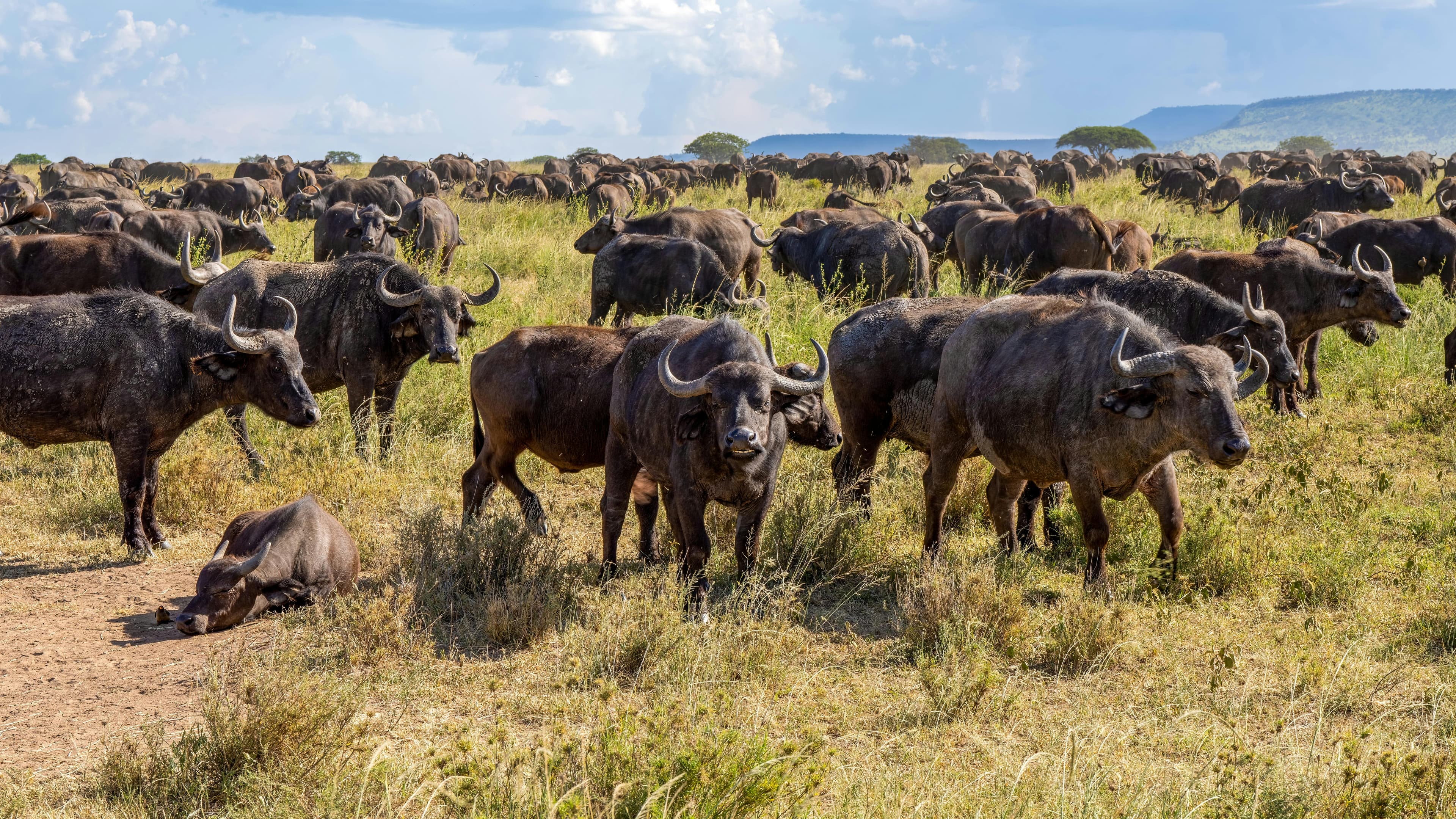
Horned Giants and Graceful Gazelles: Exploring Africa’s Most Iconic Horned Animals
August 13, 2025
Afrishare Trekking & Safaris
Discover Africa’s most iconic horned animals, from buffalo to kudu, and learn how their horns help them survive, thrive, and shape the wild.
Africa is a land of contrasts — from golden savannas dotted with acacia trees to dense, shadowy forests and vast, unforgiving deserts. Across these diverse landscapes roam some of the world’s most fascinating horned animals. Their horns are more than just striking features — they’re tools for survival, symbols of dominance, and works of natural art.
These creatures are not only emblematic of Africa’s wild beauty but also play vital roles in maintaining the balance of their ecosystems. From defending against predators to shaping vegetation patterns, horned animals leave an undeniable mark on the continent.
In this guide, we’ll journey across Africa to meet some of the most remarkable horned animals — from towering buffalo to elusive antelopes, and even a reptile with horns.
1. African Buffalo (Syncerus caffer)
A powerhouse of the African plains, the African (Cape) Buffalo can weigh up to a metric ton. Their broad, curved horns — known as a “boss” when the bases fuse — can stretch over 1 meter wide. These horns aren’t just for show: buffalo use them in fierce battles with predators and rival males.
Buffalo are famously unpredictable and known as one of Africa’s “Big Five” game animals. They move in large herds, sometimes numbering in the hundreds, and can be found in grasslands, wetlands, and woodlands from South Africa to Ethiopia.
Fun fact: When threatened, buffalo herds will often form a defensive circle, horns facing outward, to protect calves in the center.

2. Greater Kudu (Tragelaphus strepsiceros)
Arguably one of Africa’s most photogenic antelopes, the Greater Kudu is famed for its spiraling horns — masterpieces of nature that can grow up to 1.8 meters long. These horns help males establish dominance during the rut and may also aid in deterring predators.
Their vertical white stripes provide camouflage in woodland and bushland habitats. Kudus are also incredible athletes, able to leap over 2.5-meter fences with ease.
Did you know? Despite their size, kudus are quiet and elusive, earning them the nickname “grey ghost” among hunters and wildlife photographers.
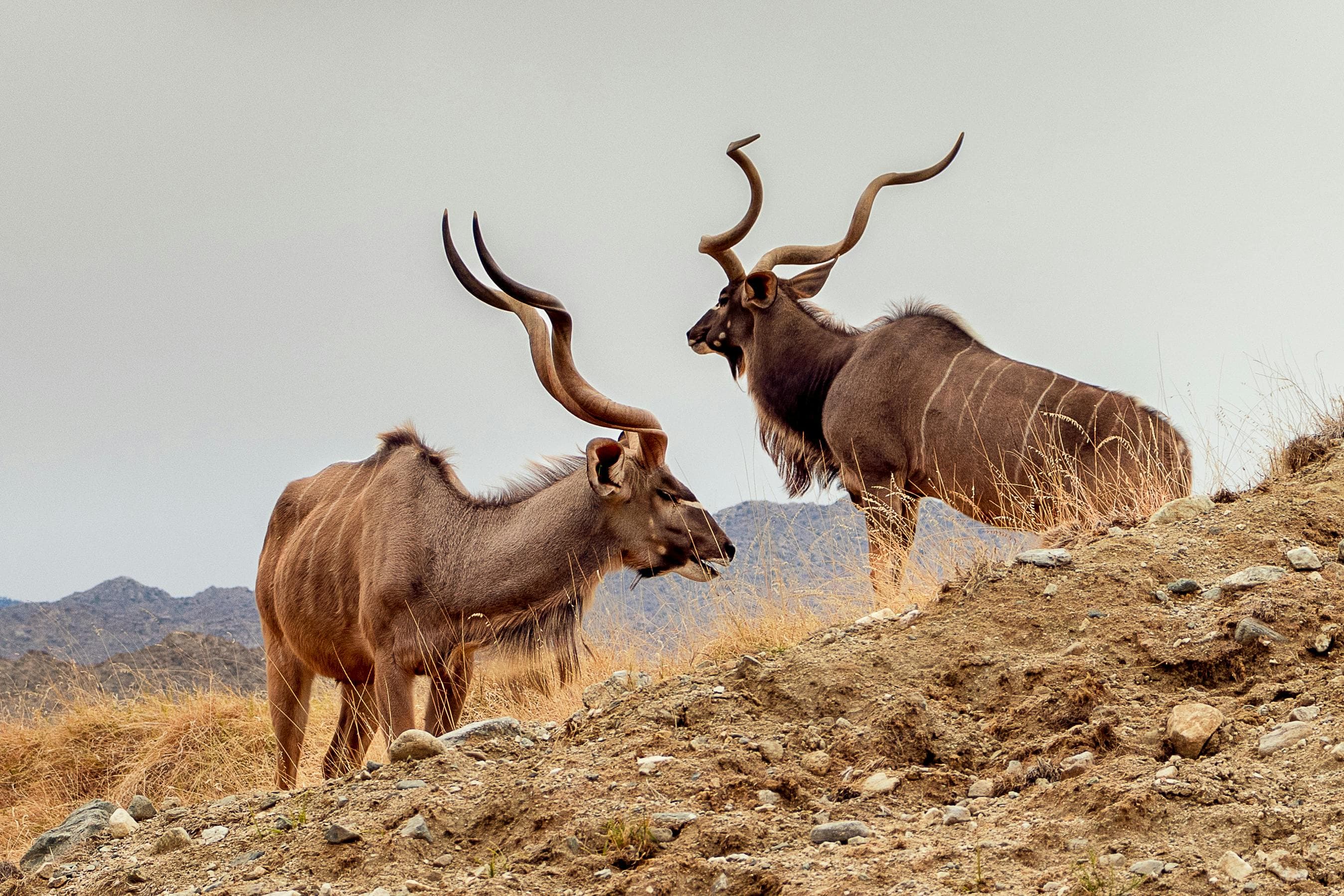
3. Eland (Taurotragus oryx)
The gentle giants of the antelope world, elands can weigh nearly a ton. Both sexes have spiral horns, though the males’ are thicker. Elands can survive in a variety of habitats, from dry savannas to mountain slopes.
They are surprisingly agile for their size, able to trot for long distances and leap up to 2.5 meters from a standing start. They’re also valuable seed dispersers, helping maintain grassland diversity.
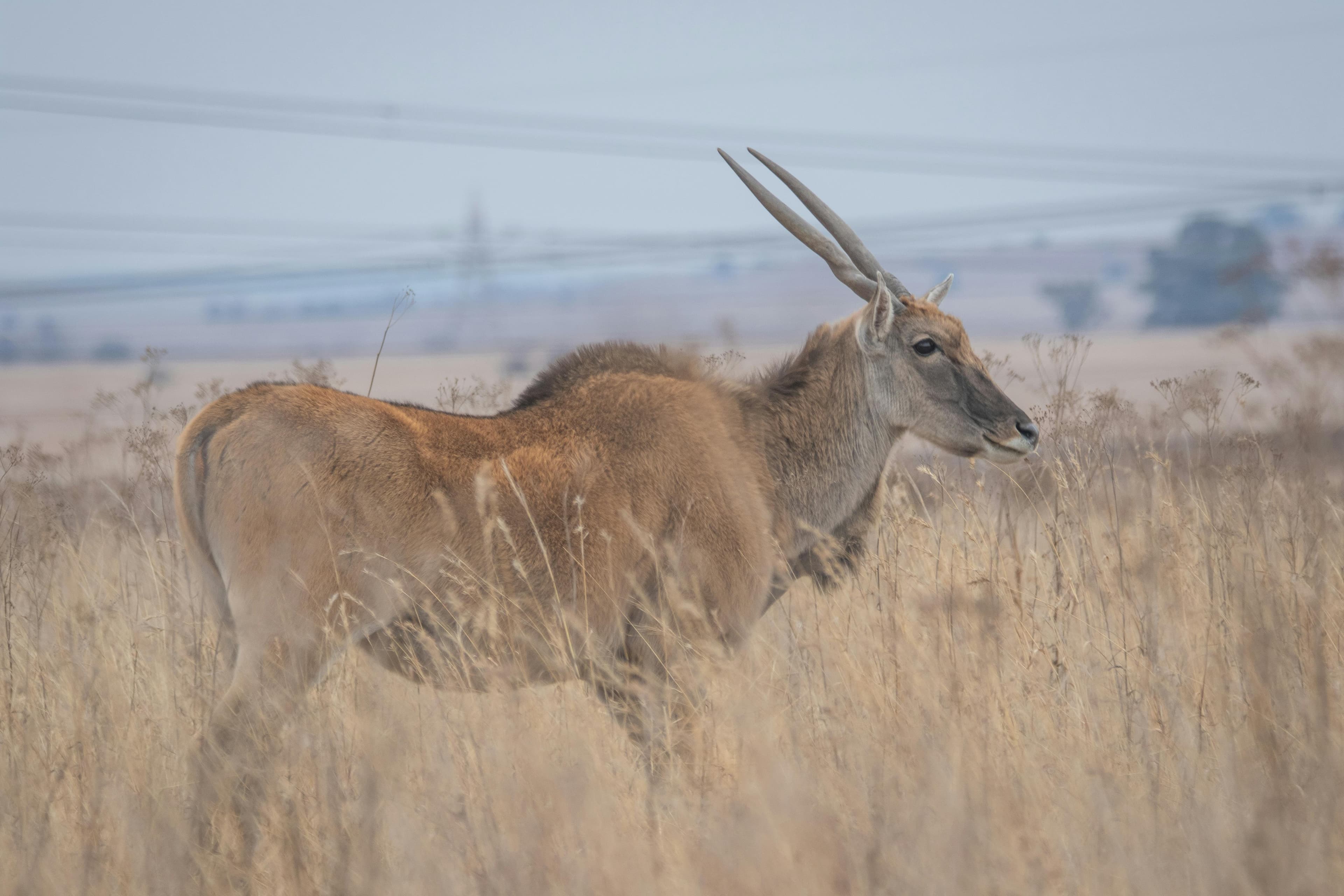
4. Impala (Aepyceros melampus)
One of Africa’s most common and graceful antelopes, impalas are instantly recognizable by their lyre-shaped horns (found only in males). These can reach up to 90 cm in length.
Impalas are famous for their speed and agility — leaping up to 10 meters in a single bound. This makes them difficult prey for predators like cheetahs and leopards.
Interesting note: During the breeding season, male impalas become extremely territorial, using their horns in dramatic fights to secure harems of females.
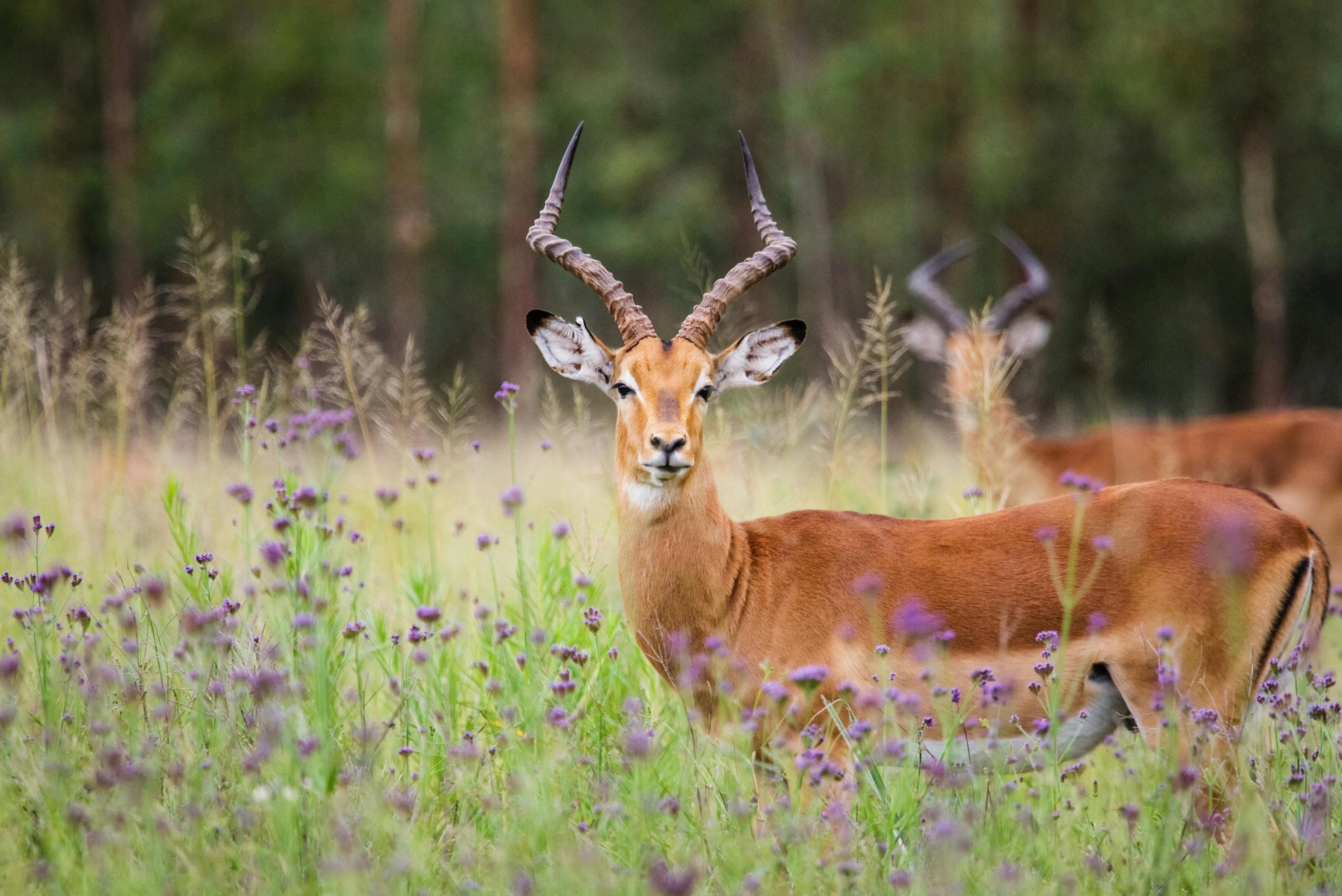
5. Springbok (Antidorcas marsupialis)
A symbol of South Africa (even the national rugby team bears its name), the Springbok is known for its elegant horns and unique “pronking” behavior — high, stiff-legged jumps into the air.
Both males and females have horns, though the males’ are longer. Springboks thrive in arid and semi-arid environments, relying on their ability to extract moisture from food.
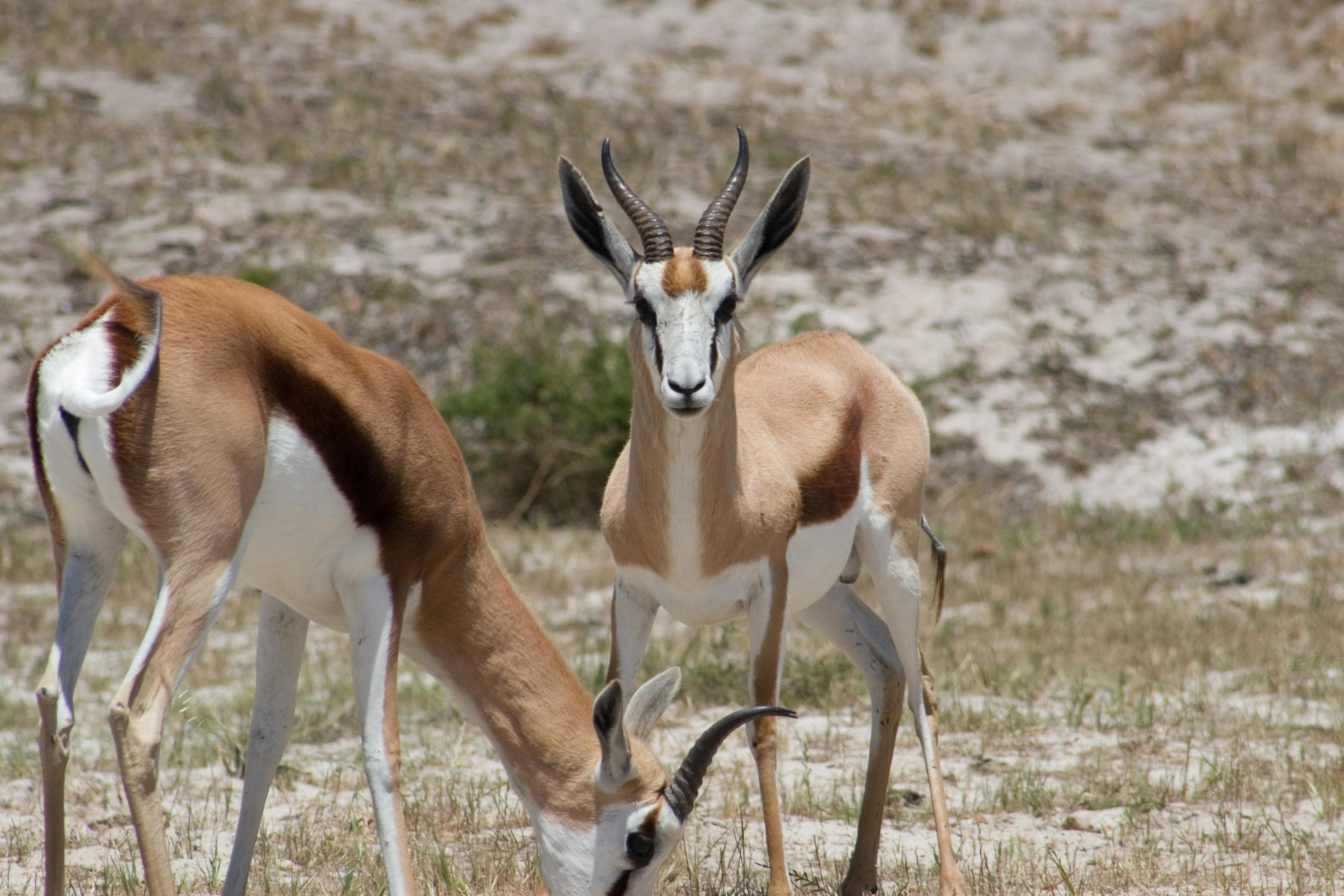
6. Gemsbok / Oryx (Oryx gazella)
With their long, straight horns and striking black-and-white facial markings, gemsboks are icons of desert survival. Found in Namibia’s harsh deserts, they can go days without drinking water, extracting hydration from wild melons and roots.
Their horns — present in both sexes — can be deadly weapons against predators.
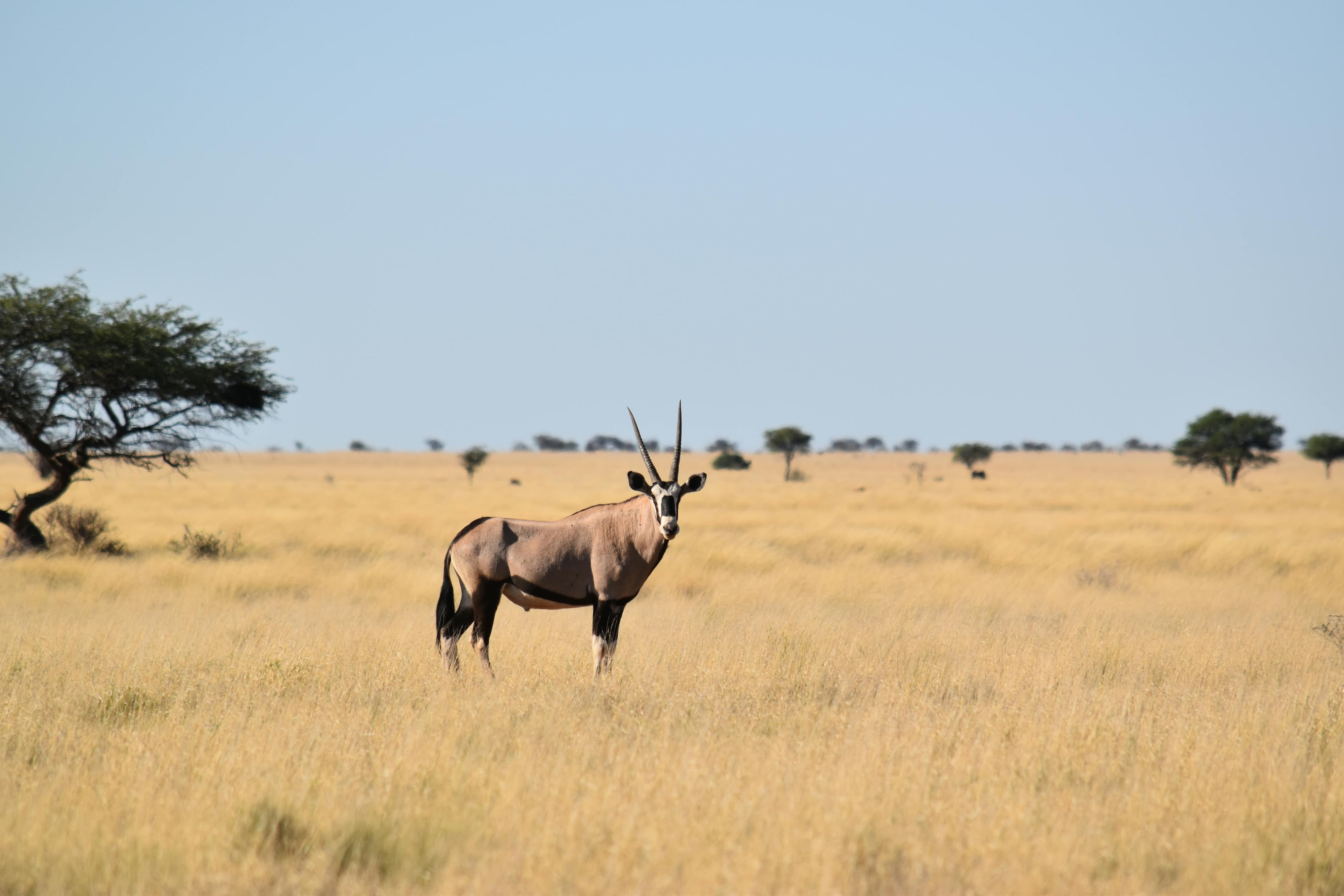
7. Waterbuck (Kobus ellipsiprymnus)
These shaggy-coated antelopes are never far from water, which is both a refuge and a feeding ground. Only males have long, lyre-shaped horns, which they use in fights for territory.
Waterbucks have a distinctive white ring around their rump — like a built-in “follow me” signal for herd members.
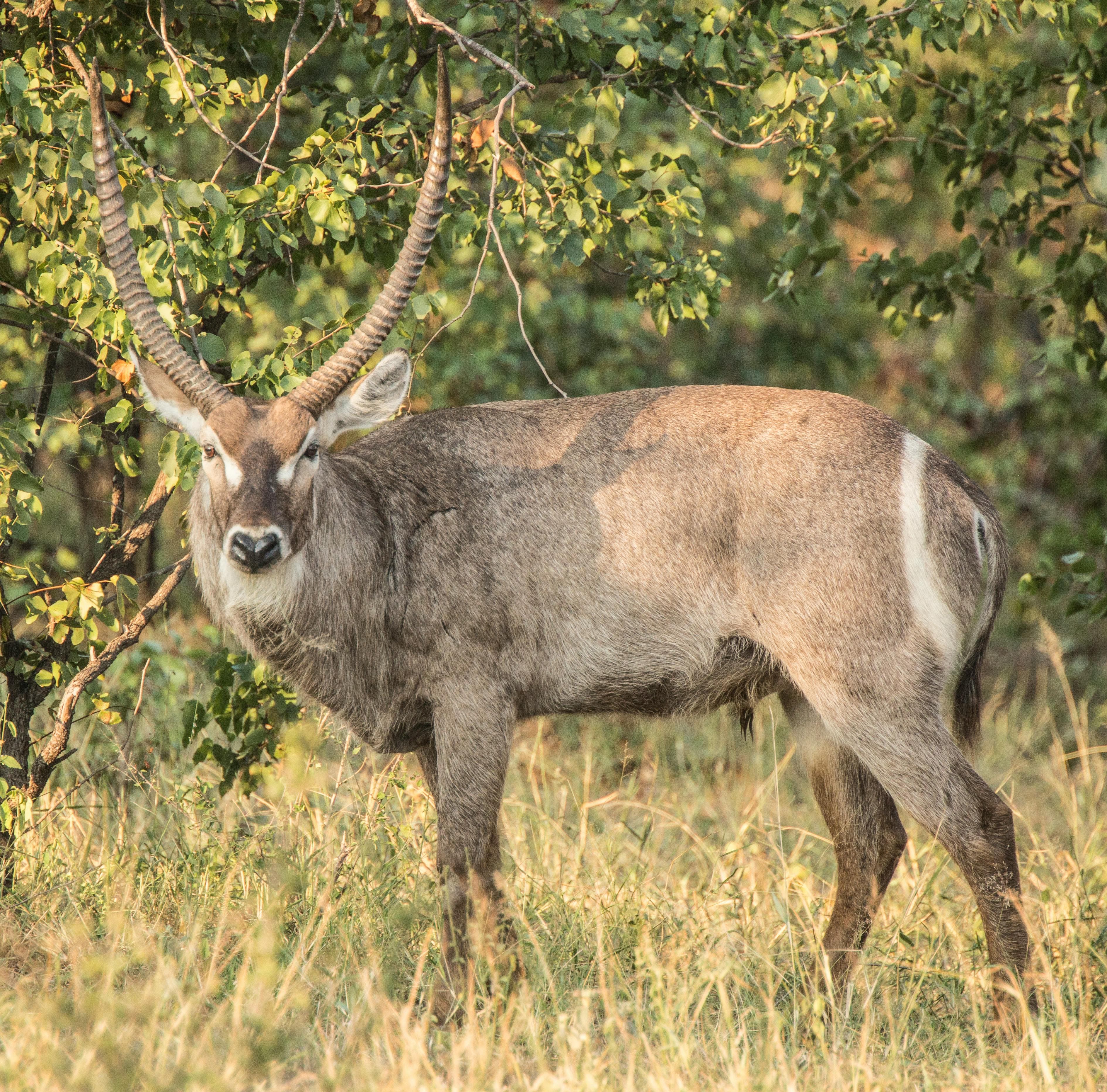
8. Bushbuck (Tragelaphus scriptus)
Shy and solitary, the bushbuck prefers to stay hidden in dense undergrowth. Males have short, spiral horns, which they use in intense, sometimes lethal, fights.
Despite their size, bushbucks are incredibly agile and can move silently through thick vegetation, making them difficult to spot.
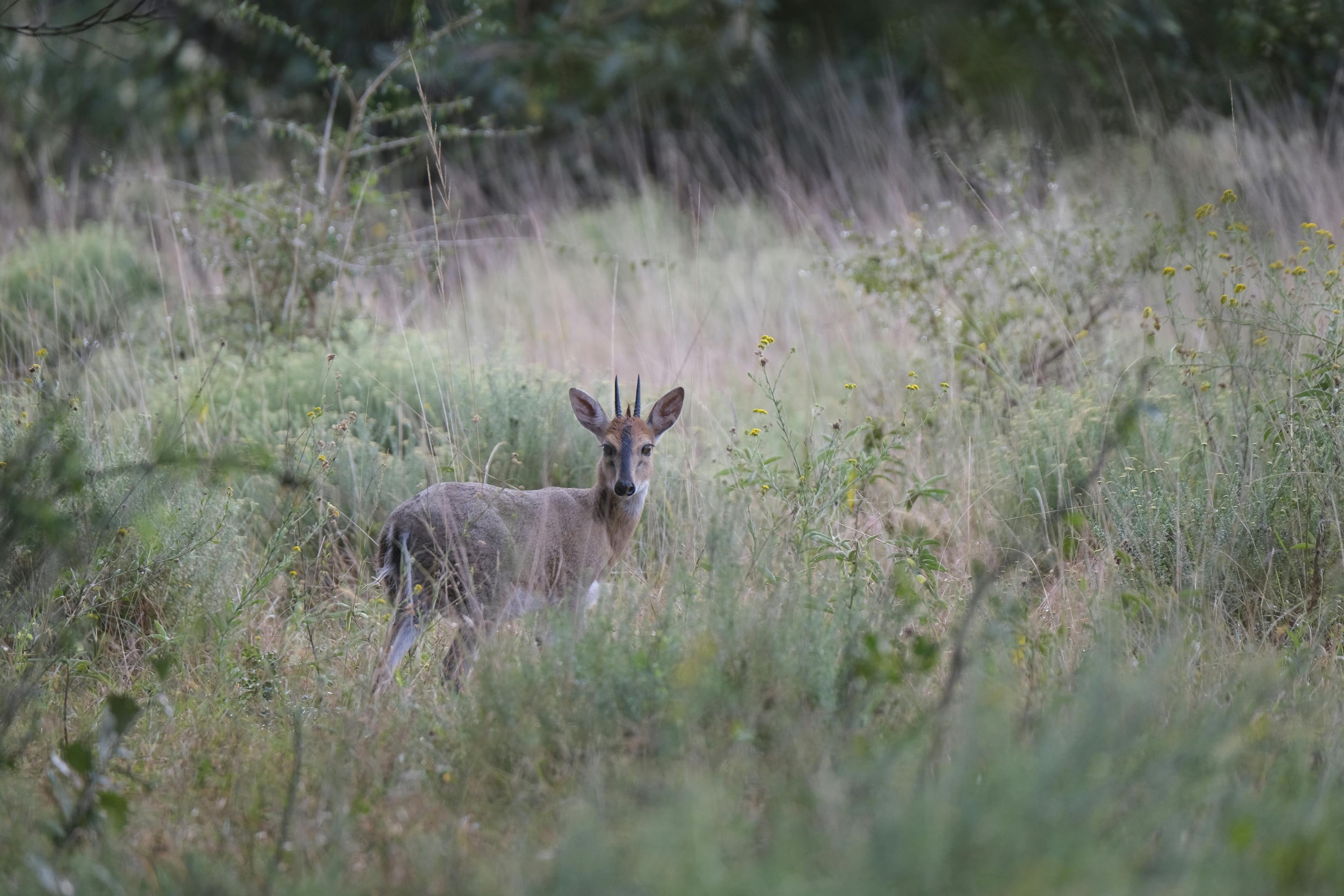
9. Sable Antelope (Hippotragus niger)
A living work of art, the sable antelope boasts long, curved horns up to 1.2 meters long. Males are a striking glossy black with white facial markings, while females are reddish-brown.
They are fearless defenders of their herds, known to confront predators like lions with their sharp horns.
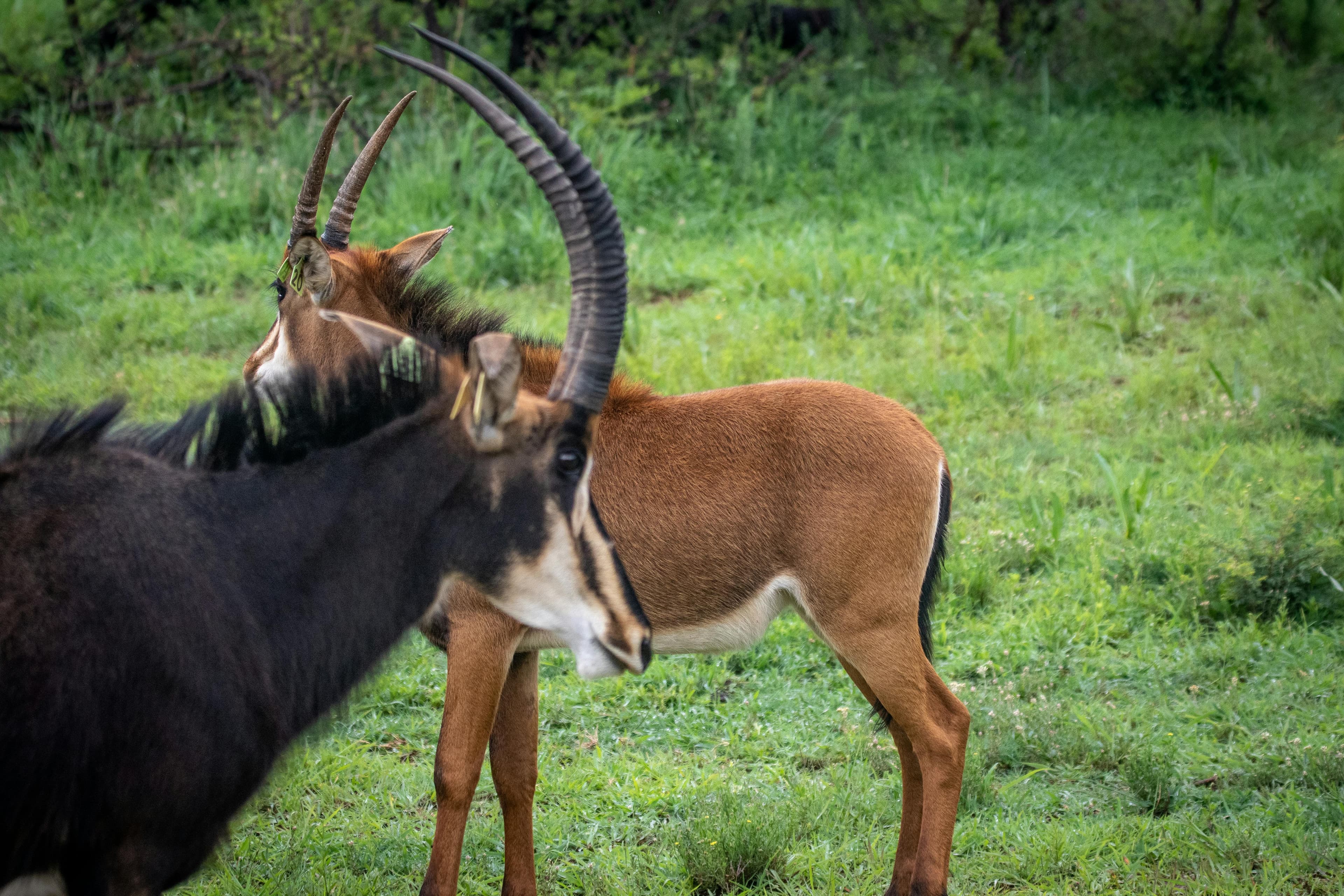
10. Nyala (Tragelaphus angasii)
With a mix of stripes, spots, and a fringe of long hair along the back, nyalas are some of Africa’s most beautiful antelopes. Only males carry spiral horns. They are often found in dense bush near water sources.
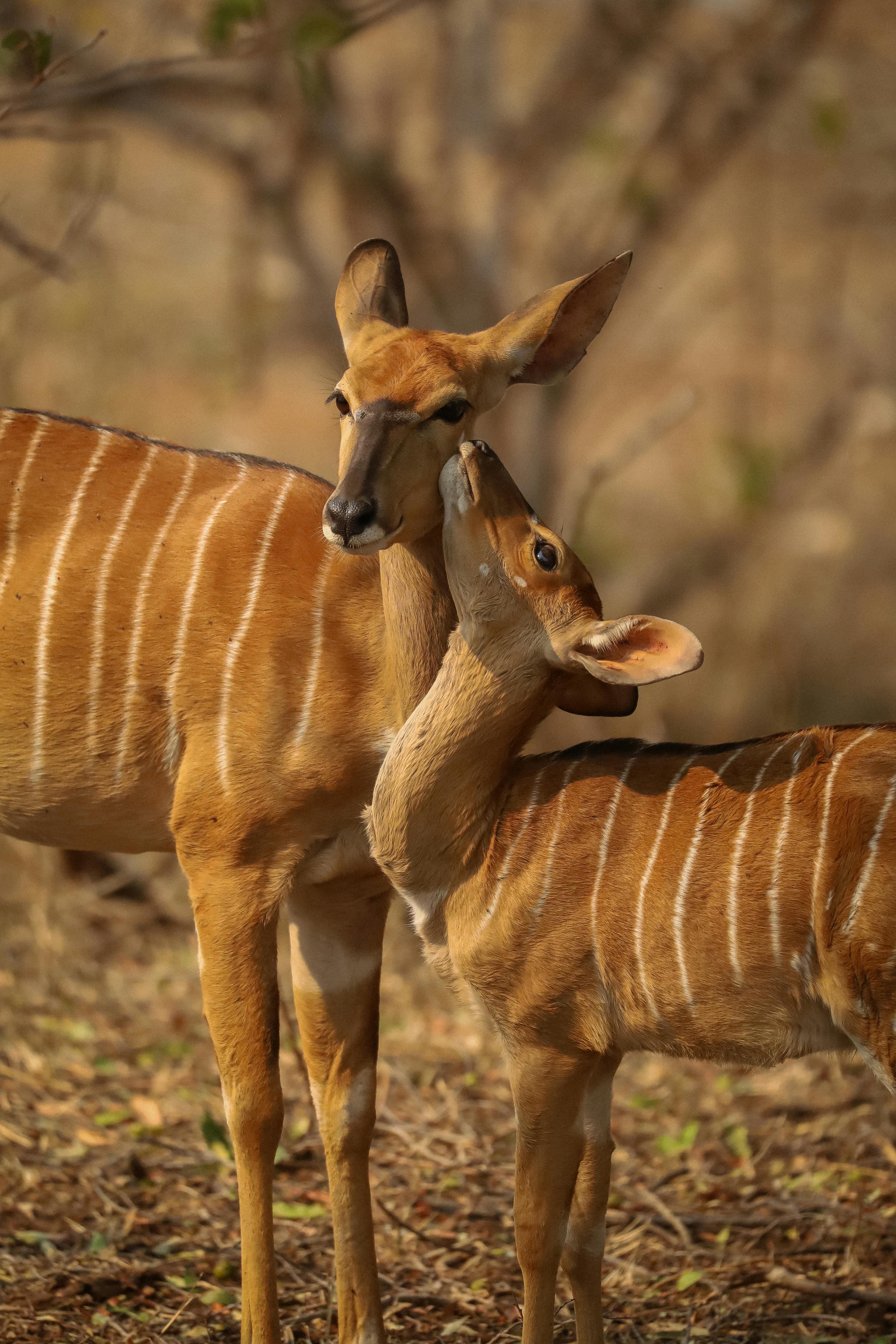
11. Common Reedbuck (Redunca arundinum)
Preferring wetlands and floodplains, reedbucks are often seen in pairs. Males have forward-curving, ridged horns up to 45 cm long. They communicate with a high-pitched whistle when alarmed.
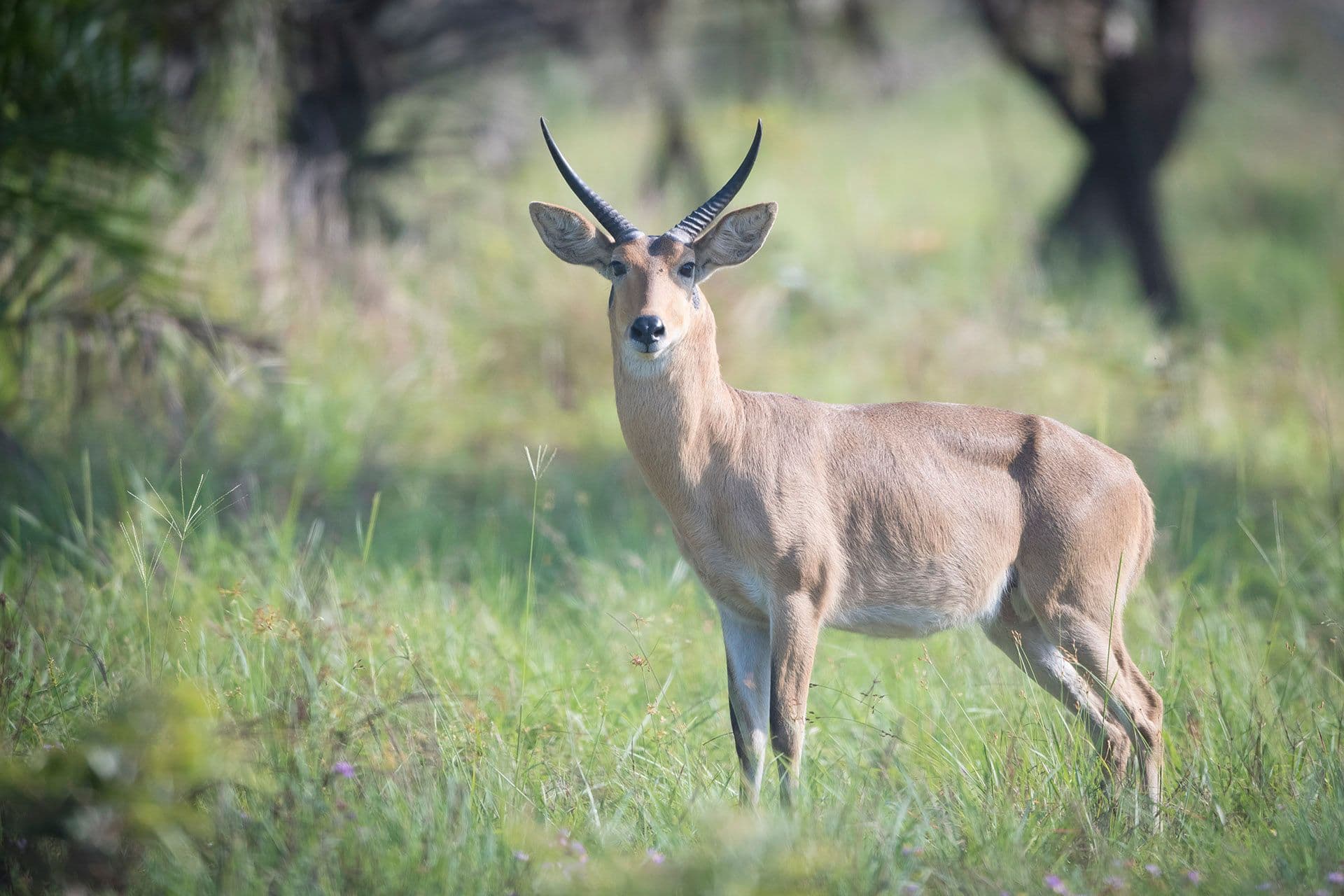
12. Roan Antelope (Hippotragus equinus)
Powerful and social, roan antelopes are among Africa’s largest antelope species. Both sexes carry scimitar-like horns up to 1 meter long. They inhabit open savannas, often forming herds of 20 or more.
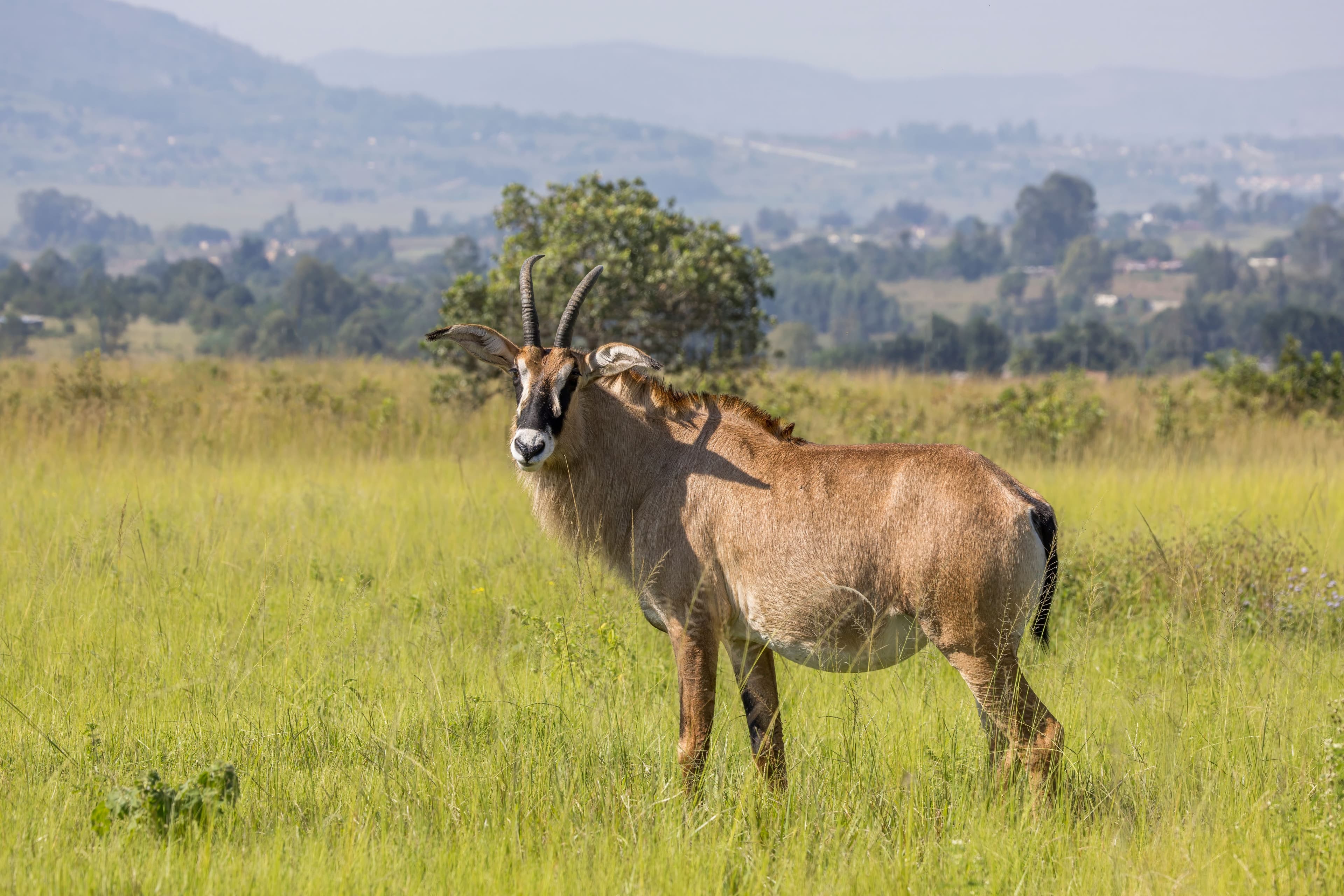
Bonus: The Saharan Horned Viper (Cerastes cerastes)
Not all horned animals in Africa are mammals. The Saharan horned viper, found in North Africa’s deserts, has two horn-like scales above its eyes. It uses these to blend into sand dunes, waiting to ambush prey.
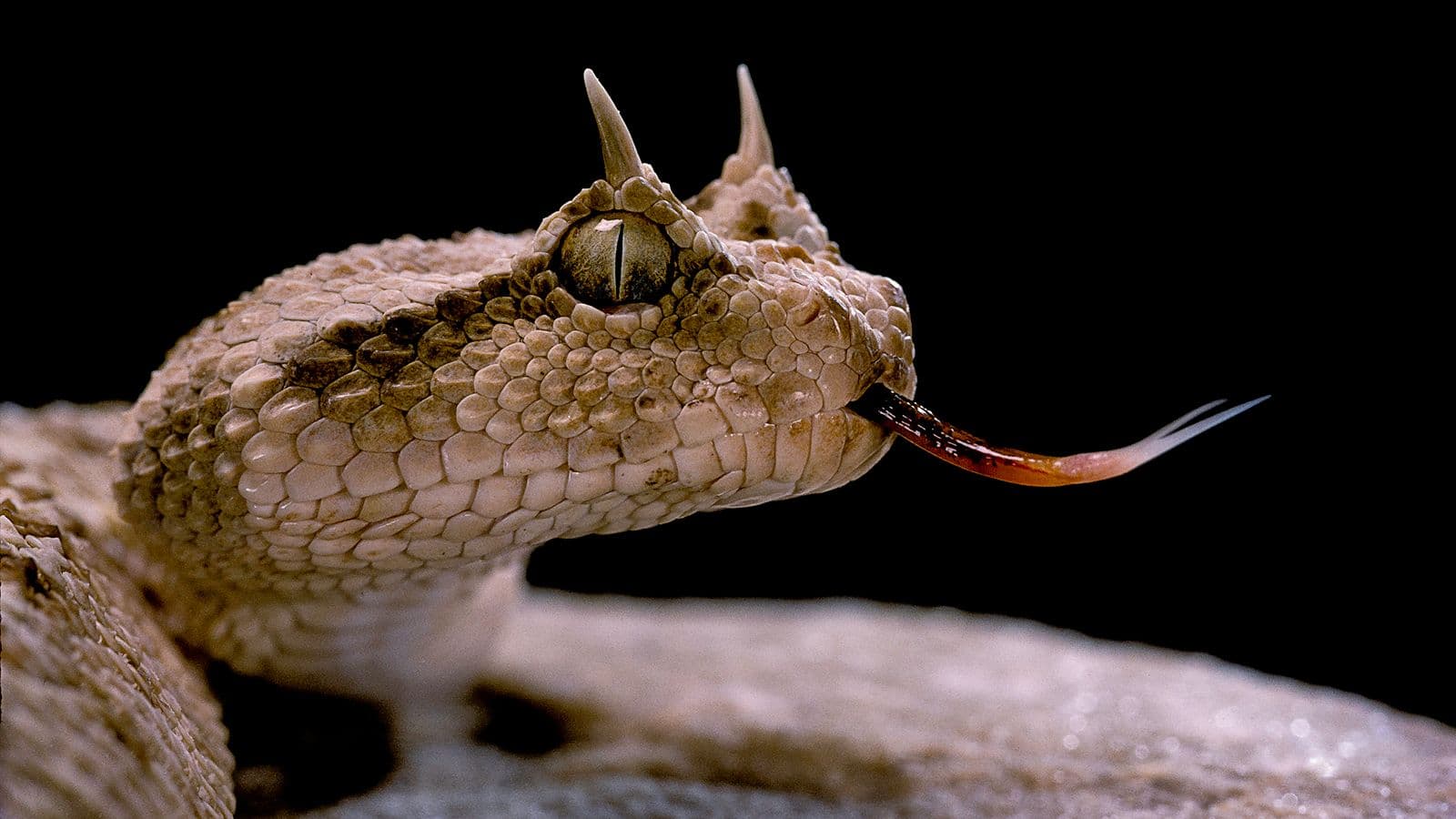
Why Horns Matter
Horns aren’t just for show. In the African wilderness, they:
- Defend against predators – Many animals use them as last-resort weapons.
- Establish dominance – Males fight for territory and breeding rights.
- Attract mates – Larger or more symmetrical horns can signal genetic health.
- Aid survival – In some species, horns help clear vegetation or dig for water.
Final Thoughts
Africa’s horned animals are as diverse as the landscapes they inhabit. Each species tells a story of adaptation, survival, and beauty. Whether it’s the spiral elegance of a kudu, the raw power of a buffalo, or the desert-hardened resilience of an oryx, these creatures remind us why Africa is a wildlife treasure trove.
From the lush wetlands to the parched deserts, if you keep your eyes open on safari, you’ll see that horns — in all their shapes and sizes — are a crown worn by some of the most captivating animals on Earth.
